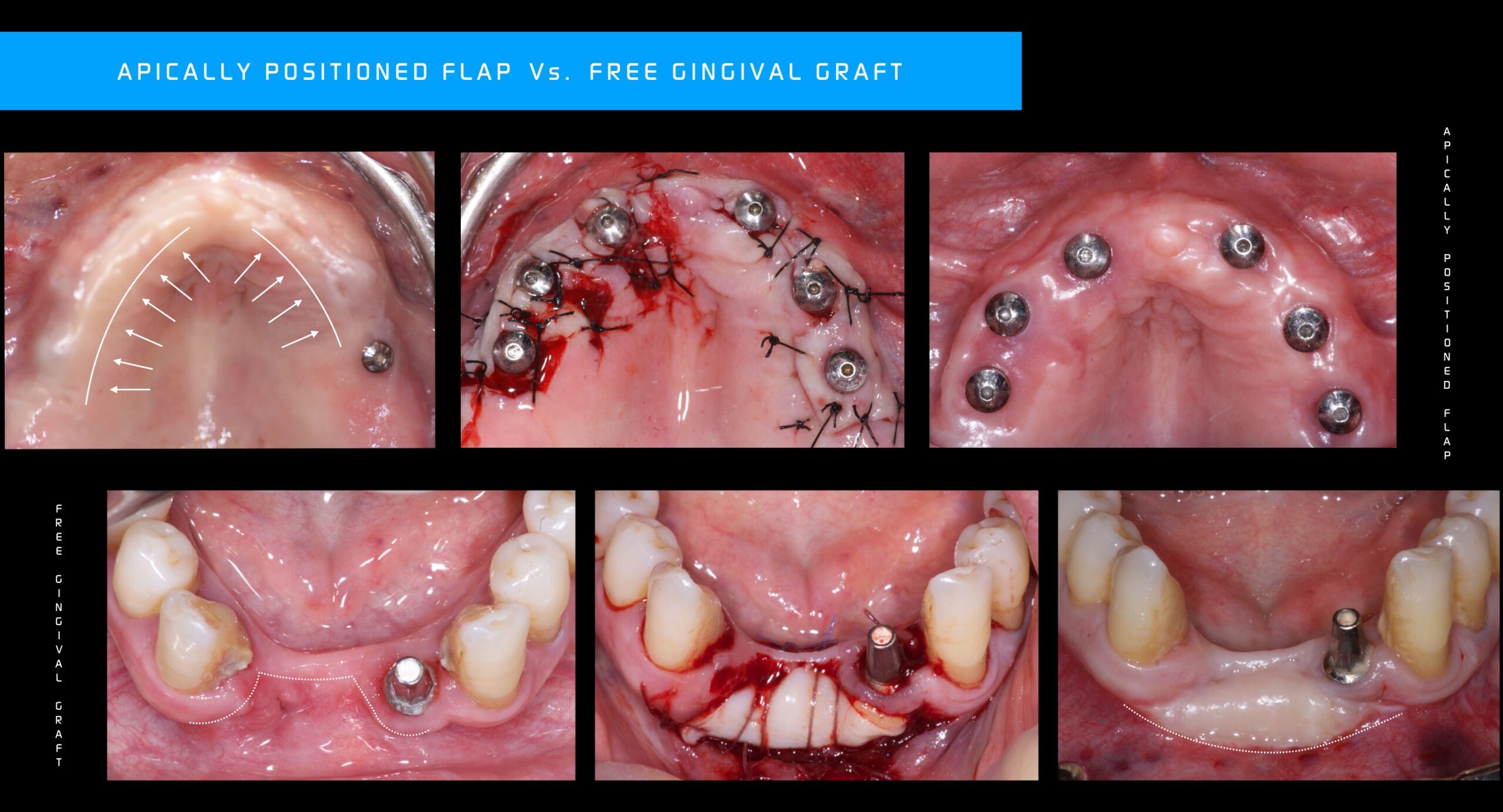Scientific Literature describes many variables at the time of presenting the best implant situation for long term stability and the quality of the periimplant tissues should not be questioned. But many studies have shown as well bone stability around implants without the “mandatory” presence of keratinized gingiva (KG).
The truth is that biologically speaking the nature provides attached gingiva to the critical areas around our natural teeth where the bone is and where the seal zone is becoming an important part of the biological width.
This makes the rationale statement of always trying to maintain or create at least 2mm of KG around your implant restorations in order to provide stable tissues and less prone to inflammation, more collagen fibers that will help to prevent the bacterial progression in case of their presence.
Now the question resides on which technique should we perform to gain those 2mm of KG? Free gingival graft or apically reposition flap? Since many publications show KG formation by just performing a vestibuloplasty would that option be enough and predictable?
Well the answer depends on where is the starting point, how much KG do I have to move apically or would be enough that to gain the tissue desired without harvesting a free gingival graft from the palate?
Now the moment comes when we must think not only about the quantity but also the quality of that KG.
Here I present 2 cases, the first one ARF was performed on all implants with no free gingival graft or connective tissue added.
Whenever repositioning the flap is going to be the option, try always to move as much KG as possible since a big part of it will not be present bucally as a result of the healing and maturation of the tissues.
Repositioning apically the flap taking advantage of the second stage surgery provided me the attached keratinized gingiva needed to gain the 2mm or even more.
On the second case, a failed implant was the reason for the visible defect, muco-gingival junction suffered a lingual displacement and a thick free gingival graft was harvested from the palate to provide enough keratinized gingiva for the posterior bone regeneration and implant placement.
As you can imagine, ARF would have not been the option due to lack of KG to move and the non esthetic result is the less important at this point.
In the esthetic zone if a FGG is performed at a visible location, blending the “patch” with a diamond bur or with diode laser can provide a similar aspect to the adjacent gingiva.
Remember that a New Masterclass in Soft Tissue Grafting is coming soon.
Don’t miss it!


